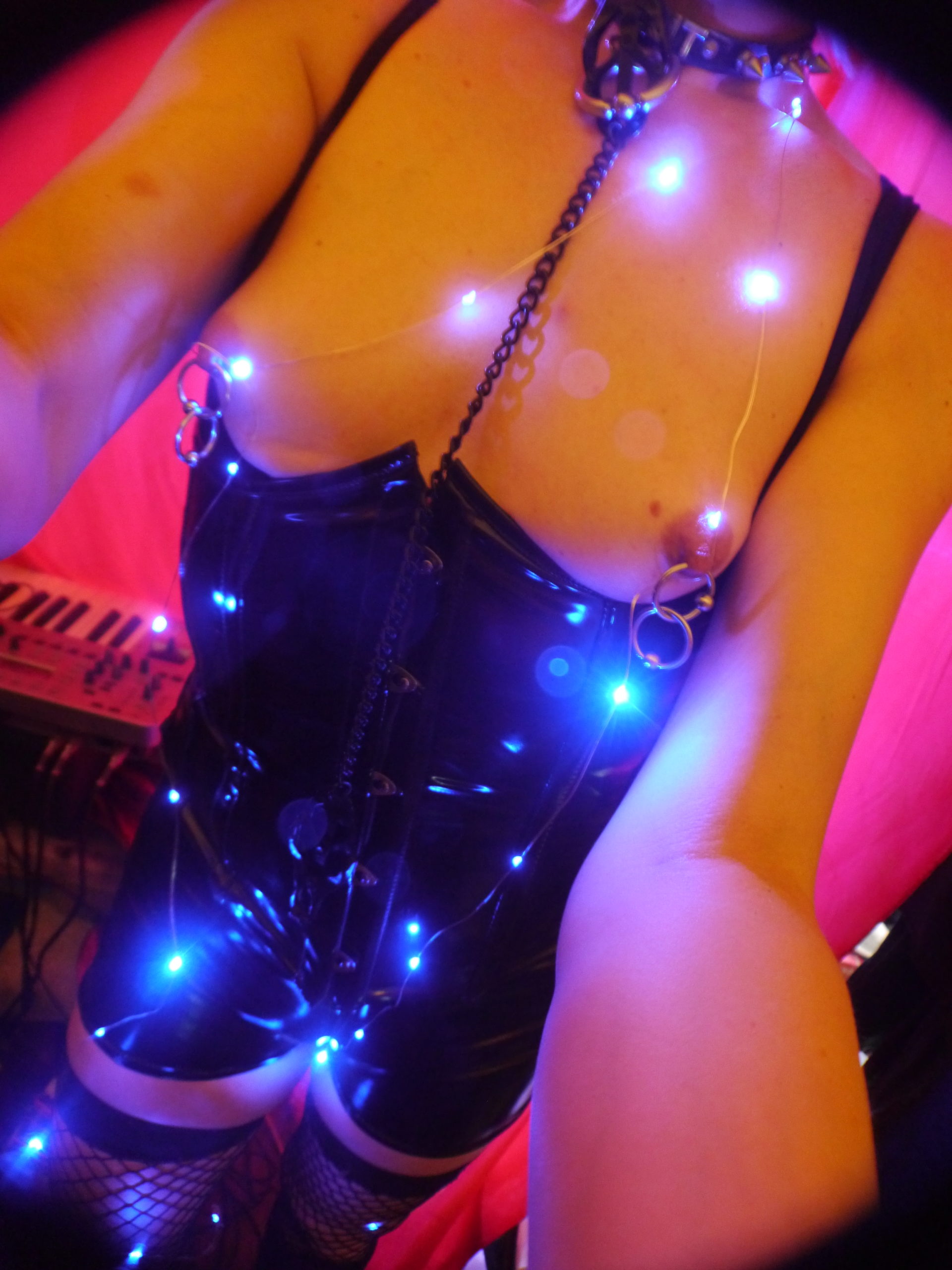Sorry about the un-polished nature of this video, I was partway through editing it when my hard drive died and i’ve not been able to restore the backups yet, so imperfect as it is, I thought I’d just upload it as is otherwise I’d probably end up doing nothing. This is new a MIDI instrument/expression controller I built called “EntroPea” (aka the electric hedgehog) which I’ve been working on to control various vintage synths using ultrasound sensors measuring distance, and arm-waving, piped through to midi signals.
I love my Behringer TD3 and Roland TB-303 but they both require you to prepare patterns before you can play, there’s no on-the-fly editing and I find that can mean you just keep doing the same stuff over and over or have to be very organised with your patterns, which I am not.
The Korg EA1 lets you edit on the fly but has no accent/velocity and that’s something i use a lot so isn’t much use really. bababaBOWbababaBOW – gotta have the accents.
The Futureretro 777 is the only one which lets you edit patterns on the fly (and does it extremely well) but it has so many knobs that you’re basically starting from scratch every time anyway sound-wise. Coming back to a sound isn’t really a thing on that because the range of sounds it can make is so huge and bizzarre.
Anyway – re this device, I wanted something where you could (somewhat) intuitively throw together a short pattern of a few bars (to sample) or to use as an expressionate lead, either on its own/layered up with delays/fx for chilled music, or perhaps over another 303 or something like the futureretro 777 so then you’d get the mix of patterns plus random extra wibbly lead bits.
I’m sorry about the camera quality too – filming this was a spur of the moment thing and filmed on a webcam, in low lighting, and I realised afterwards my hands were out of shot much of the time too – not ideal. Normally I never speak on videos either cos I don’t usually like how my voice sounds on tape but I didn’t hate it here, hence getting published.
I’ll add a link to the github which has the arduino code once this is uploaded (it’s on another machine). This box started off just as an arduino with a midi interface/hat and it would spit out random notes with random timing over several MIDI channels from a set selection, so you could just plug in a midi-out cable, turn it on and chuck it in a corner and it would just churn out random notes and random timing for 2-3 days till the battery ran out, and dial in its notes when you needed them.
That was interesting and quite entertaining but eventually i wanted more control and then figured out how to use these Ultrasonic sensors. I’ll try and make a more polished video at some point but in the mean time hopefully this gives you a rough idea what it’s about… In case you’re wondering why “random” notes or why I’m not particularly fussed about the exact pitch of the notes, In practice I find a lot of the end product (sound-wise) comes from the shaping of the notes and layered fx after the note is triggered, which means the actual pitch of the note often isn’t actually that important, it’s more just a starting point for subsequent sound shaping.
I used to think there was a “grand unified way” or a “correct” way of setting all these boxes up so they’re finally all in synch and timed together… and when I did eventually get to do that, the result was really dull and uninspiring. So now I’ve kinda gone the other direction towards full chaos. Most of my boxes are now not midi synced (apart from the 777 which won’t keep time otherwise), which means you end up with tiny little offsets between the loops which can cause “tension”/”groove”, generally with much more interesting results than when everything’s (allegedly) perfectly in sync.
as a DJ (on vynil/cds anyway) you just rely on your ear for timing so why not here? It takes a bit of getting used to and flies somewhat in the face of traditional midi setups, but I kinda prefer it, plus it means you can stop one device and fiddle with the settings while everything else is playing, without messing up the other machines in the chain Besides, the Kaoss pads kinda live in their own weird midi timezones anyway and have no midi clock start/stop and don’t appear to pass thru midi data clean so the whole sync idea goes out the window anyway pretty quickly.
On entropea, I would like to add something which detects a clock/bpm if there is one present, and scales its timing to that, but I’ve not figured out how midi clocks work yet on the arduino, and tbh the entropea doesn’t really seem to need to, or benefit from, conforming to traditional timing…
Thanks for reading if you got this far, if for some bizzarre reason you feel the urge to build one of these message me at niki@nikiflux.com and I’ll send you some decent photos and a rough layout of the wiring and what components you need. If you’re an arduino/c genius and can figure out how to make the slide work without breaking everything else (need to have a slight overlap between note-on and note-off between notes) then please do let me know. Atm I can get the slide working but then other stuff breaks, and haven’t really had time to look into it further.
Github for the code:
https://github.com/LD50303/entropea-td3-777
